Table of Contents
Deep beneath the verdant landscapes of Vietnam, a labyrinthine network of tunnels known as the Cu Chi Tunnels Inside weaves its way through the earth, beckoning curious travelers to embark on a historical odyssey. These tunnels, a testament to the resilience and ingenuity of the Vietnamese people, played a pivotal role in the country’s struggle for independence, serving as a hidden sanctuary for soldiers and civilians alike. Venturing into the Cu Chi Tunnels is like stepping back in time, into the heart of a bygone era when the tunnels were a lifeline for the Vietnamese people. The air is thick with history, and the walls whisper tales of bravery, sacrifice, and unwavering determination. From the narrow entrances hidden amidst lush vegetation to the intricate network of subterranean chambers, every inch of these tunnels tells a story. Navigating the Cu Chi Tunnels Inside is an experience like no other. Visitors can crawl through the same narrow passages that once concealed soldiers from enemy forces, encountering booby traps and secret hideouts along the way. The tunnels are a testament to the resourcefulness of the Vietnamese people, who constructed this underground world with only rudimentary tools and sheer determination. The tunnels served as a sanctuary for soldiers, providing them with shelter from airstrikes and artillery fire.

The Cu Chi Tunnels Inside, located approximately 70 kilometers northwest of Ho Chi Minh City, are a complex network of underground tunnels spanning over 250 kilometers. The tunnels were initially built during the French colonial period in the late 1940s and expanded during the Vietnam War in the 1960s. They were used by the Viet Cong, a guerrilla force fighting against South Vietnam and its allies, as a base of operations and a means of communication and supply routes. The tunnels were also used as hiding spots for soldiers during enemy attacks and as a means of transporting weapons and supplies.
The Entrance
The entrance to the Cu Chi Tunnels is unassuming, hidden amidst the lush greenery of the surrounding forests. Visitors are greeted by a small, nondescript opening in the ground, barely noticeable to the untrained eye. This was intentional, as the Viet Cong wanted to keep the tunnels hidden from their enemies. The narrow entrance leads to a series of underground chambers, with some sections being only 70 centimeters wide and 1.2 meters high. These tight spaces required visitors to crawl on their hands and knees, just like the soldiers did during the war.
The Network of Tunnels
Once inside the tunnels, visitors are transported back in time to the Vietnam War era. The network of tunnels is a maze, with multiple levels and interconnected passageways. The tunnels were built in a zigzag pattern to confuse and trap enemy forces. Along the way, visitors can see various rooms and chambers that served different purposes, such as meeting rooms, kitchens, and hospitals. There are also hidden trapdoors and secret escape routes, showcasing the ingenuity and strategic planning of the Viet Cong.
Uncovering the Secrets of the Cu Chi Tunnels from Within
The Cu Chi Tunnels Inside are not just a physical structure; they hold a wealth of historical significance and secrets waiting to be uncovered. As visitors navigate through the tunnels, they can learn about the daily life of the soldiers who lived there and the tactics used to outsmart their enemies. The tunnels also reveal the hardships and sacrifices endured by the Vietnamese people during the war.
Daily Life in the Tunnels
Life in the tunnels was not easy. Soldiers had to endure cramped living conditions, lack of fresh air and sunlight, and constant fear of being discovered by the enemy. They had to adapt to living in the dark, relying on candles and oil lamps for light. Cooking was done in small, well-ventilated kitchens to avoid detection by enemy forces. The soldiers also had to deal with pests such as rats and insects, which were a constant nuisance.
Tactics Used by the Viet Cong
The Cu Chi Tunnels were a crucial part of the Viet Cong’s military strategy. They were used to launch surprise attacks on their enemies and to evade capture. The tunnels were also equipped with booby traps, designed to maim or kill any unsuspecting enemy soldiers who stumbled upon them. These traps were made from simple materials such as bamboo spikes and sharpened metal stakes, yet they were highly effective in slowing down enemy forces.
Hardships and Sacrifices
The Cu Chi Tunnels are a testament to the resilience and determination of the Vietnamese people. It took years of hard work and sacrifice to build and maintain these tunnels. Many soldiers lost their lives during the construction process, and those who survived had to endure harsh living conditions. Despite the challenges, the tunnels played a crucial role in the Vietnam War, contributing to the eventual victory of North Vietnam over South Vietnam.
Discovering the Hidden Passages of the Cu Chi Tunnels
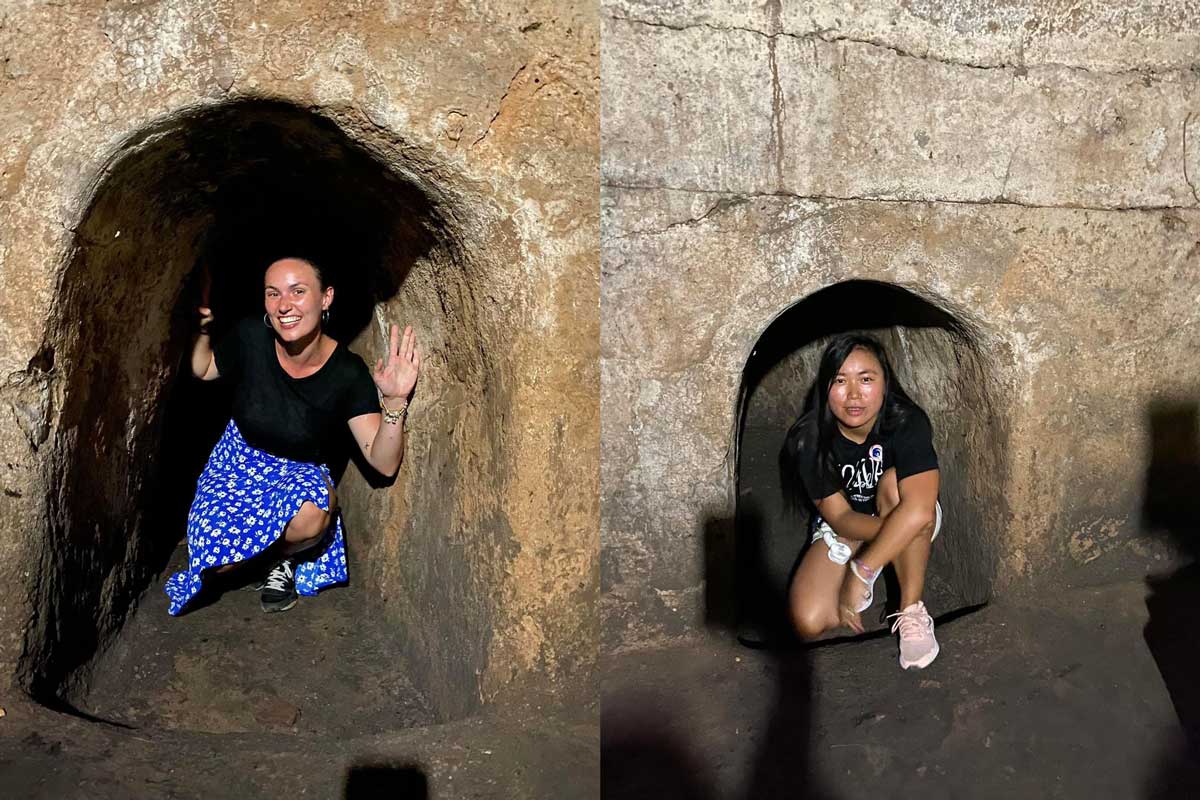
As visitors make their way through the Cu Chi Tunnels Inside, they will come across various hidden passages and chambers that offer a glimpse into the past. These hidden gems are not to be missed, as they provide a deeper understanding of the tunnels’ historical significance.
Ben Duoc Memorial Temple
Located near the entrance of the tunnels, the Ben Duoc Memorial Temple is a tribute to the soldiers who fought and died in the Cu Chi region during the Vietnam War. The temple features a large statue of a mother holding her child, symbolizing the sacrifices made by the Vietnamese people during the war. Visitors can also see a collection of weapons and artifacts used during the war, including a tank and an American helicopter.
The Hoang Cam Kitchen
The Hoang Cam Kitchen is a replica of the original kitchen used by the Viet Cong during the war. It showcases the simple cooking methods and utensils used by soldiers to prepare meals in the tunnels. Visitors can also sample some traditional Vietnamese dishes, cooked using the same techniques as those used during the war.
The Underground Hospital
One of the most impressive features of the Cu Chi Tunnels Inside is the underground hospital. This fully functional hospital was used to treat wounded soldiers during the war. Visitors can see the various rooms, including an operating room, a recovery room, and a pharmacy, all hidden deep within the tunnels.
Inside the Cu Chi Tunnels: A Journey Through History
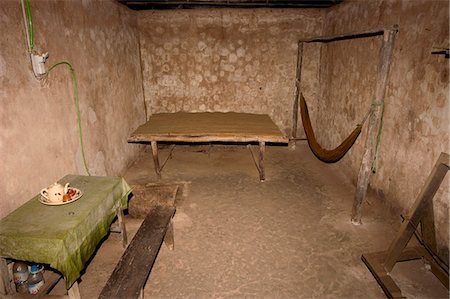
The Cu Chi Tunnels are not just a tourist attraction; they are a living museum that offers a unique perspective on the Vietnam War. As visitors crawl through the narrow passageways, they are transported back in time to experience the struggles and triumphs of the Vietnamese people.
The Importance of the Cu Chi Tunnels
The Cu Chi Tunnels played a crucial role in the Vietnam War, serving as a base of operations for the Viet Cong and a means of communication and supply routes. They were also a symbol of the resilience and determination of the Vietnamese people, who refused to surrender despite facing overwhelming odds.
The Legacy of the Cu Chi Tunnels
Today, the Cu Chi Tunnels Inside stand as a testament to the bravery and sacrifices made by the Vietnamese people during the war. They are a reminder of the country’s tumultuous past and serve as a symbol of hope for a brighter future. The tunnels have been preserved as a historical site, allowing visitors to learn about this significant period in Vietnam’s history.
The Impact on Tourism
The Cu Chi Tunnels have become a popular tourist destination, attracting thousands of visitors each year. The tunnels offer a unique and immersive experience, allowing visitors to learn about the war from a different perspective. Tourism has also brought economic benefits to the local community, providing job opportunities and boosting the economy.
The Intricate Network of the Cu Chi Tunnels Revealed
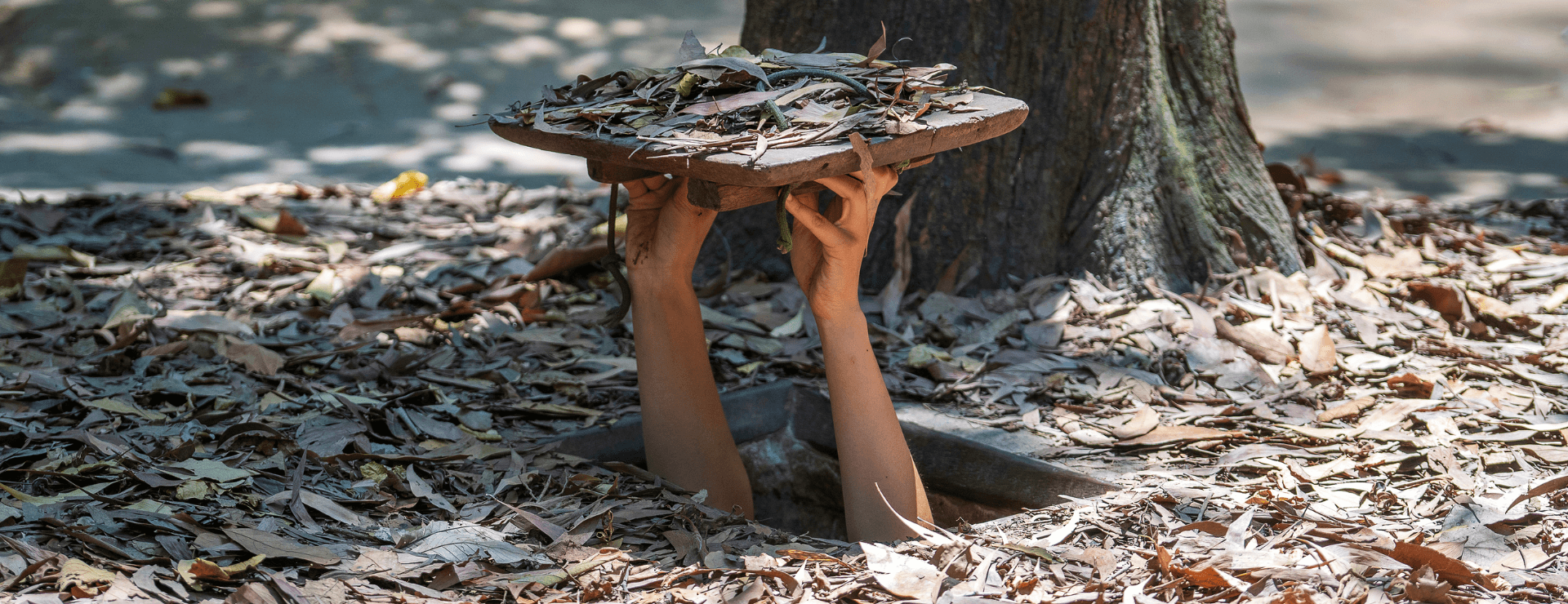
The Cu Chi Tunnels are not just a series of underground passages; they are an intricate network of interconnected tunnels that served multiple purposes during the war. As visitors make their way through the tunnels, they can see the various features that made this network so effective.
The Three Levels of Tunnels
The Cu Chi Tunnels were built in three levels, each serving a different purpose. The first level was used for living quarters, storage, and weapons caches. The second level was used as a communication and supply route, while the third level was reserved for military operations and as a means of escape.
Ventilation Systems
One of the most impressive features of the Cu Chi Tunnels Inside is the ventilation system. The tunnels were designed with multiple vents and air holes to allow fresh air to circulate and prevent suffocation. These vents were also used to disperse smoke from cooking fires, preventing enemy forces from detecting the tunnels’ location.
Booby Traps
The Viet Cong were masters at constructing booby traps, and the Cu Chi Tunnels were no exception. Visitors can see various types of traps, including spiked pits, tripwires, and hidden trapdoors, all designed to slow down or injure enemy soldiers. These traps were often camouflaged and could be triggered by the slightest movement, making them highly effective.
A Closer Look at the Cu Chi Tunnels: Beyond the Surface
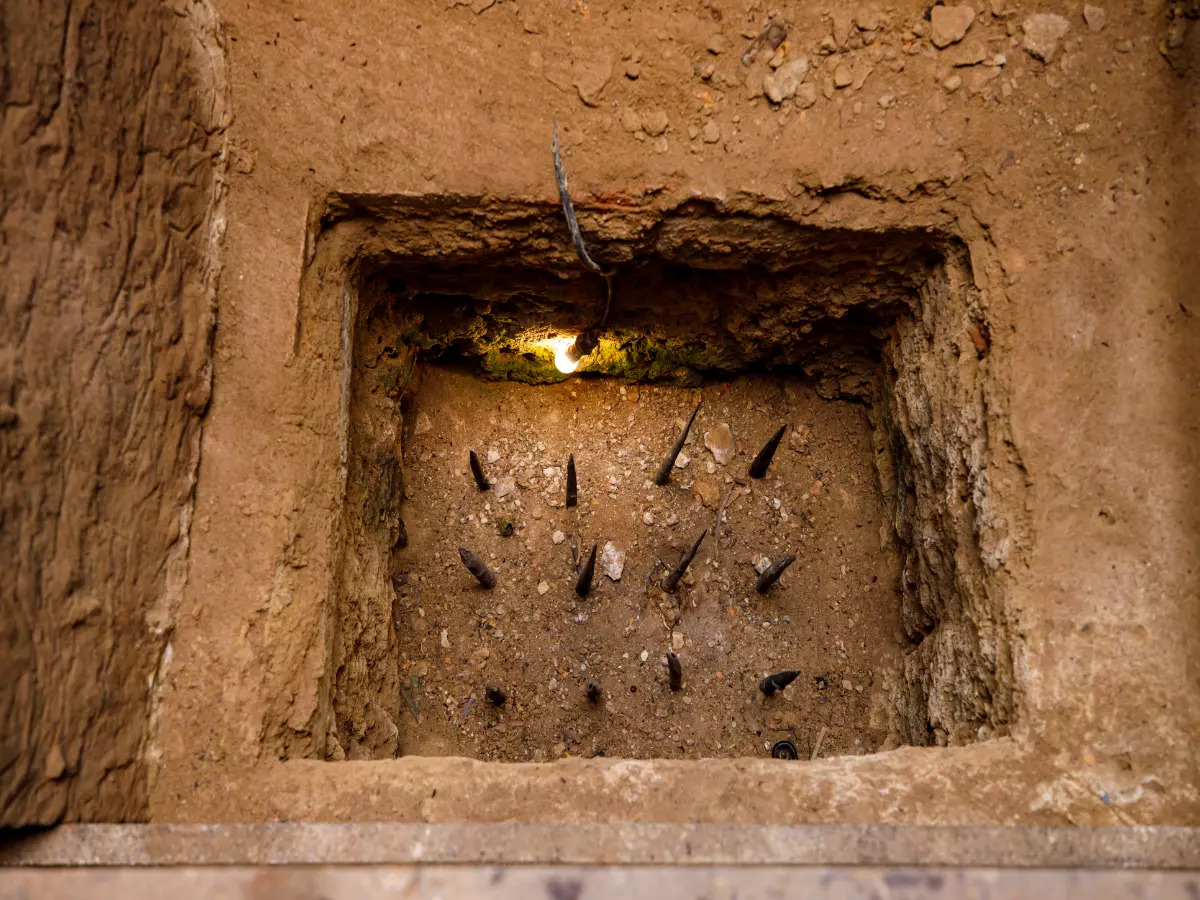
While the Cu Chi Tunnels are a fascinating attraction on the surface, there is much more to discover beneath the ground. From secret hideouts to hidden chambers, there is always something new to uncover in this underground world.
Secret Hideouts
As visitors make their way through the tunnels, they will come across various secret hideouts used by the Viet Cong. These were small chambers hidden deep within the tunnels, used as a place of refuge during enemy attacks. Visitors can crawl into these hideouts and experience what it was like to live in such confined spaces.
The Underground Meeting Room
The Cu Chi Tunnels also had an underground meeting room, where soldiers would gather to discuss tactics and plan their next move. This room was well-hidden and could only be accessed through a series of narrow passageways. Visitors can see the various artifacts and maps used during these meetings, providing insight into the Viet Cong’s military strategies.
The Hoang Cam Stove
The Hoang Cam Stove is another fascinating feature of the Cu Chi Tunnels Inside. This stove was used to cook meals for soldiers living in the tunnels. It was designed to produce minimal smoke, preventing enemy forces from detecting the tunnels’ location. Visitors can see how the stove was built and learn about the cooking techniques used during the war.
Journeying through the Cu Chi Tunnels: What Lies Inside?
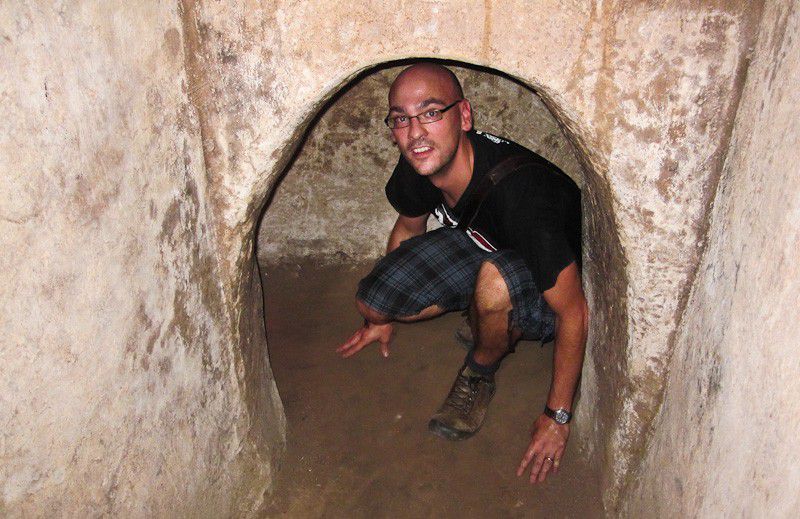
As visitors make their way through the Cu Chi Tunnels, they will encounter various obstacles and challenges, just like the soldiers did during the war. From narrow passageways to booby traps, the journey through the tunnels is not for the faint of heart.
Crawling through Narrow Passages
One of the most challenging aspects of navigating the Cu Chi Tunnels is crawling through the narrow passages. These tight spaces require visitors to get down on their hands and knees and crawl through the dark, cramped tunnels. It can be a physically demanding experience, but it provides a glimpse into the hardships endured by soldiers during the war.
Encountering Booby Traps
Visitors must also be cautious of the various booby traps scattered throughout the tunnels. These traps were designed to injure or slow down enemy soldiers, and they can still be triggered today. Visitors are advised to follow their guide’s instructions carefully to avoid any accidents.
The Secret Escape Route
The Cu Chi Tunnels had a secret escape route that was used by soldiers to flee in case of an emergency. This route was well-hidden and could only be accessed through a small trapdoor. Visitors can crawl through this narrow passage and experience what it was like for soldiers to escape from the tunnels under enemy fire.
Unveiling the Mysteries of the Cu Chi Tunnels from the Inside
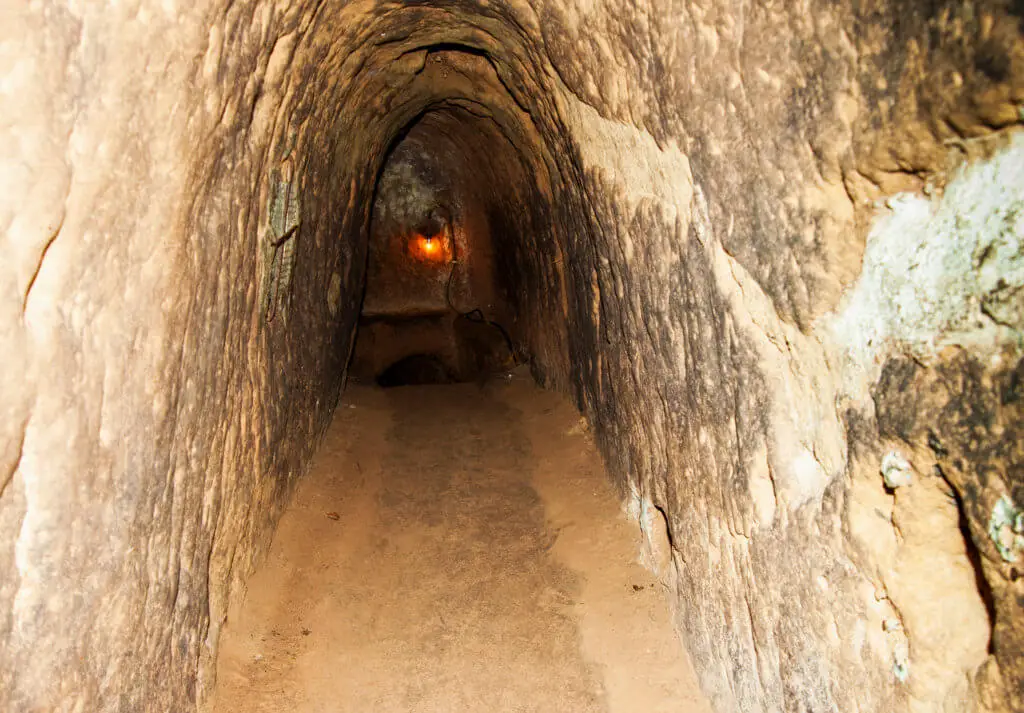
The Cu Chi Tunnels hold many secrets waiting to be discovered by curious visitors. From hidden chambers to underground hospitals, there is always something new to uncover in this underground world.
The Underground Ammunition Factory
One of the most impressive features of the Cu Chi Tunnels is the underground ammunition factory. This factory produced weapons and ammunition for the Viet Cong during the war. Visitors can see the various tools and equipment used to manufacture these weapons, providing insight into the resourcefulness of the Vietnamese people.
The Underground School
The Cu Chi Tunnels also had an underground school, where soldiers were trained in guerrilla warfare tactics. The school was equipped with classrooms, maps, and other teaching materials, all hidden deep within the tunnels. Visitors can see how soldiers were trained to fight against their enemies and learn about the different strategies used during the war.
The Underground Command Center
The underground command center was the nerve center of the Cu Chi Tunnels. It was used to coordinate military operations and communicate with other Viet Cong bases. Visitors can see the various communication devices used during the war, including radios and telephones, providing a glimpse into the Viet Cong’s sophisticated communication network.
Inside the Cu Chi Tunnels: A Must-See Experience
The Cu Chi Tunnels are a must-see experience for anyone visiting Vietnam. They offer a unique and immersive journey through history, providing insight into the struggles and triumphs of the Vietnamese people during the war.
How to Visit the Cu Chi Tunnels
The Cu Chi Tunnels can be visited as a day trip from Ho Chi Minh City. Visitors can join a guided tour or hire a private guide to explore the tunnels. It is recommended to book in advance, especially during peak tourist season, to avoid disappointment.
What to Expect
Visitors should be prepared for a physically demanding experience when visiting the Cu Chi Tunnels. The tunnels are narrow, dark, and humid, and visitors will need to crawl through some sections. It is also advisable to wear comfortable clothes and closed-toe shoes to navigate through the tunnels safely.
Other Attractions in the Area
The Cu Chi Tunnels are not the only attraction in the area. Visitors can also visit the Cao Dai Temple, a colorful and ornate temple that is home to the Cao Dai religion. The temple is located near the entrance to the tunnels and is worth a visit to learn about this unique religion.
Conclusion
The Cu Chi Tunnels Inside are more than just a tourist attraction; they are a living museum that offers a unique perspective on the Vietnam War. From hidden chambers to secret escape routes, every inch of these tunnels tells a story. Navigating through the Cu Chi Tunnels is an unforgettable experience, providing insight into the resilience and determination of the Vietnamese people. It is a journey through history, uncovering the secrets of the Cu Chi Tunnels from within.